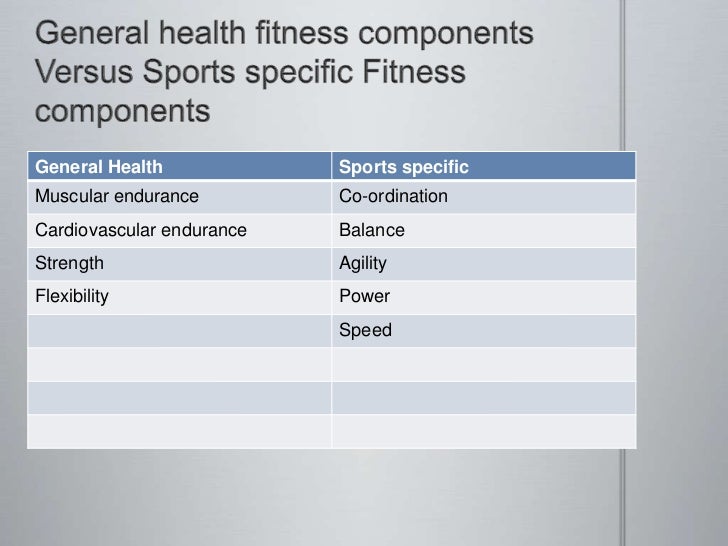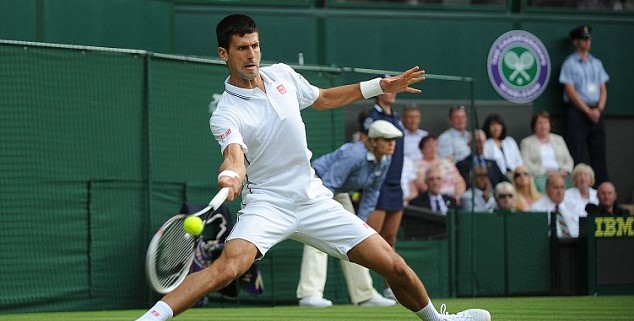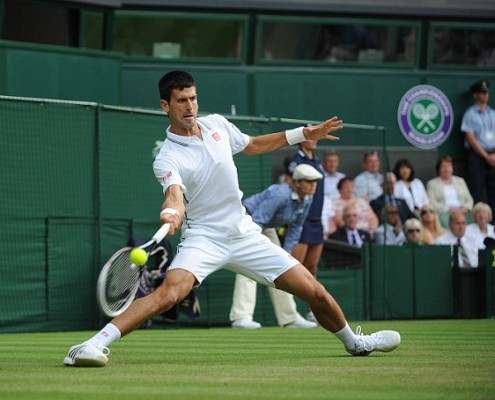What is sport specific fitness?
If you’re like me you love to play sport, the competitive challenge of testing your skills and physical attributes against a worthy opponent. Sport is a fast paced affair- and anyone who plays sport loves the speed of the game.
I was recently talking to one of my coaches and he was raving about some of the more ‘sport specific’ speed drills and medicine ball drills he saw me doing with some tennis players. I was worried that his take away message was that all tennis players should be doing for training is just very specific speed and strength drills. This debate is a bit like the one about free play and fitness – where it is argued that the best type of fitness for a sport is just playing the sport itself.
The essence of sports activities lies in the movements of the human body. A sport movement is a complex motor action (movement). In team sports or sports like Tennis it may be necessary to solve many motor tasks. To do this we have to learn ‘movement patterns’- a sequence of movements arranged in time and space- which when put together make up a familiar sports movement. This requires coordination.
In general, we all aspire to increase the speed at which we can perform these sporting movements. So if the name of the game is mastery of the sporting movement at speed why don’t we just imitate the sporting movements in the gym all the time? Well you see, speed of movement is really only the outcome of the ability to do something very important first. To change your body position (gravitational centre of mass) or modify limb position in space, an athlete has to overcome the forces of gravity and inertia.
In order to increase speed, the athlete must develop an adequate level of force.
Therefore the final goal of training is always related to the capacity to express power– produced by:
- Force of overcoming external resistance
- Skill to coordinate the effort
- Speed of movements
This capacity to overcome resistance at speed is known as your ‘motor potential.’
One of the most important training principles is that an increase in your motor potential must precede your capacity to utilise it in a sport specific regime. In layman’s terms you can think of your motor potential as your general fitness. If you prepare your body in a general sense first- you will be able to carry out the more explosive sport specific exercises later with a higher intensity and less injury potential.
General Fitness
General fitness is also known as Health related Fitness and incorporates five key aspects- cardiovascular endurance, muscular endurance, muscular strength, flexibility and body composition (the proportion of muscle and fat you have). To be truly fit- either for everyday living or for sports performance- requires that all these elements are worked on and are either maintained at a healthy level or are continually improved beyond that level.
With focus on qualities such as suppleness, strength and stamina the body can adapt safely to gradual increases in intensity.
It’s about developing your motor potential.
The types of training methods to get your global muscles and energy systems prepared are quite similar across sports. Hence the term ‘general.’ Younger athletes and those with lower training histories would risk injury if they are exposed too early to too much sport specific fitness- which by it’s nature is very high intensity.
With these athletes I tend to train with linear periodisation (a topic for another day!) and bring it some more specific training nearer important competitions.
Sport Specific Fitness
Being fit for sport means being able to meet the physical demands of that sport. This can be thought of sport specific fitness.
To be fit for sport involves additional sport specific skills and physical attributes such as speed and power but these should be developed on top of a broad base of general fitness.

Athletes with high levels of preparedness will already have high levels of general fitness. I like to think of it as they have already filled their bucket of motor potential to the top.

Their strength, speed and stamina capacities are already very high so their training needs to be focused on more sport specific explosive training, and for more of their training time. This is about expressing their motor potential. With these athletes I use more concurrent periodisation which means there is always some power work in the programme but the bias shifts to more sport specific power and speed work nearer important competitions.
It is true that these sport specific attributes will help you to play harder and last longer. You will be more consistent and make better decisions under fatigue.
A lot of people who want to improve their sports performance for these reasons believe that they need to focus their time here- but be warned, if you don’t do the preparatory training and try and concentrate on these explosive methods of training such as sprinting, throwing and jumping you could injure yourself.
Play Sport to Get Fit
Also, even worse a lot of people believe will get all the speed and power work they will need by playing the sport. Firstly- this is a myth. There is no single sport that can fully develop one quality. Even a 100m sprint requires multiple types of speed. Instead check out these top tips to keep you on the right path.
5 Top Tips for getting Fit for Sport
Top Tip 1- Do a fitness test
Seek out a sports performance specialist such as a UKSCA accredited strength & conditioning coach who can assess your current levels in sport specific fitness.
Top Tip 2- Do Strength training
Let’s not forget that the demands from most sports place very high stresses on the body. Most people are not well conditioned to cope with these demands, but they can be handled better by doing appropriate strength training.
Top Tip 3- Do speed training
To fully develop speed and power you also need to train these attributes in isolation when you’re fresh to maximise their capacities. Playing sport isn’t enough.
Top Tip 4- Work on addressing your imbalances
To develop sport specific fitness without maintaining general fitness across all these parameters can lead to physical imbalances and even injuries. Most sports are one sided or over work certain muscles from repetitive use. So it is important to do work outside of the sport to correct these imbalances by following an injury prevention programme.
Top Tip 5- Plan your workouts
Working on general and sport specific fitness doesn’t mean you need to do seven different workouts to develop all the fitness attributes. Many fitness activities work one or more of these attributes at the same time. You just need a qualified coach to help you put the training programme together.
In summary
Sport places high demands on your body. Many of the injuries incurred are preventable. Make sure you invest in your fitness and get fit to play sport!
If you would like to be trained by a team who work with professional athletes which will assist you improve faster and win more then contact APA Director Daz Drake at: daz@apacoaching.co.uk www.athleticperformanceacademy.co.uk





